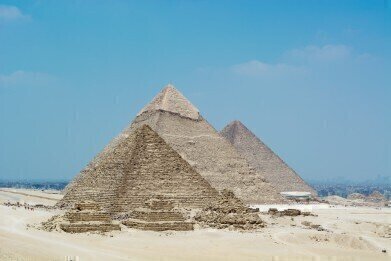GC, MDGC
How to Bring a 16,000-Year-Old Egyptian Drink Back to Life with Chromatography
Feb 17 2015
A single-distilled Scottish whisky, aged for 16 years, is generally regarded to be premium quality and will retail for anything between £20 and £2,000, depending on brand and distillery. However, alcohol archaeologist Patrick McGovern, from the Museum of Archaeology and Anthropology at the University of Pennsylvania in the USA, is attempting to see those 16 years and raise them by 1,000 times.
Chromatography an Integral Part of Revealing the Past
Working in conjunction with Dogfish Head Brewery in Delaware, Dr McGovern has been recreating antiquated beverages for the best part of 15 years. To achieve his goal, he has detected the residue of various substances, including barley, herbs and spices, on the inner surfaces of ancient receptacles. Then, using the wonders of modern technology – namely, the techniques of liquid and gas chromatography, combined with mass spectrometry – he is able to determine exactly what these substances are.
Then, he gathers the raw materials together and attempts to recreate the brewing conditions as closely as possible. This often involves unorthodox methods, such as fermenting in terracotta pots lined with beeswax, chewing and spitting corn kernels into the mixture and using vines and ancient utensils to cultivate the plants.
To date, the oldest he has successfully recreated was a 9,000-year-old Chinese drink dubbed Chateau Jihau, combining wild Chinese grapes, honey, rice and hawthorn fruit. Now, he’s hoping to delve even further into our alcoholic heritage.
Unlocking an Ancient Egyptian Alcoholic Tomb
Dr McGovern said of his oldest achievement to date: “That’s the one that I identify with most. It goes well with Asian food, it has a sweet and sour profile.” However, despite it being his current favourite, he is optimistic than an even older brew can be achieved.
“All animals are attracted to sugar and alcohol: insects, fruit fly, elephants,” he continued. “Humans would have known how to make an alcoholic beverage right from the beginning.” With such a hypothesis in mind, he is now focused on recreating a 16,000-year-old beverage from Egypt.
Such an attempt would not be the first: back in 1996, Newcastle Breweries released a pale ale called Tutankhamon Ale, allegedly based off the sediment found in jars from the Sun Temple of Nefertiti. McGovern, if successful, would even surpass that achievement.
Chromatography Deciphers Hieroglyphic Mysteries Again
It’s not the first time that the incredible technique of chromatography has been used to shed light on the mysteries of ancient Egypt. Last year, a team from the University of York used the technique to reveal that the practice of embalming and mummifying Egyptian dead was actually 2,000 years older than previously believed. The enlightening story, How Old Are Mummies?, goes into the subject in further detail, explaining how exactly chromatography was able to help scientists make such fascinating discoveries.
Digital Edition
Chromatography Today - Buyers' Guide 2022
October 2023
In This Edition Modern & Practical Applications - Accelerating ADC Development with Mass Spectrometry - Implementing High-Resolution Ion Mobility into Peptide Mapping Workflows Chromatogr...
View all digital editions
Events
Apr 23 2024 Kintex, South Korea
Apr 23 2024 Seoul, South Korea
Apr 28 2024 Montreal, Quebec, Canada
May 05 2024 Seville, Spain
May 15 2024 Birmingham, UK














